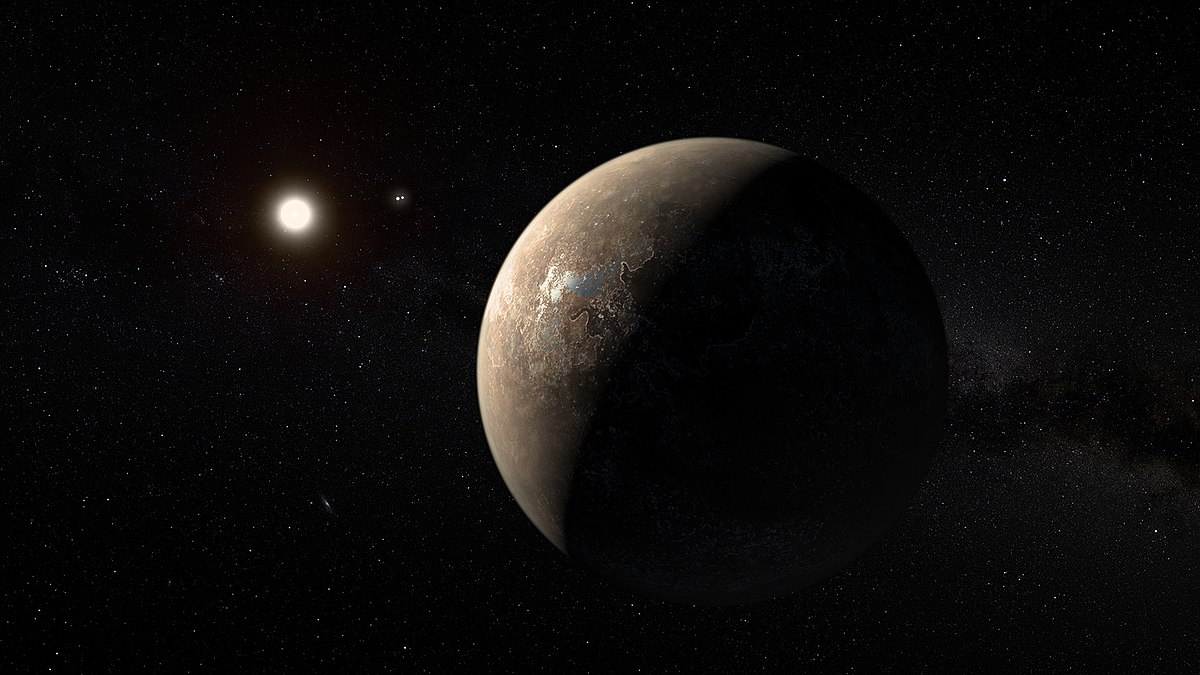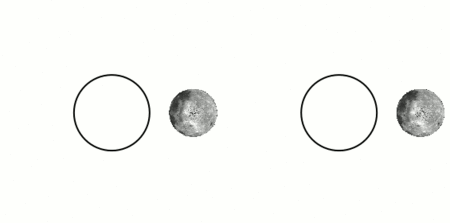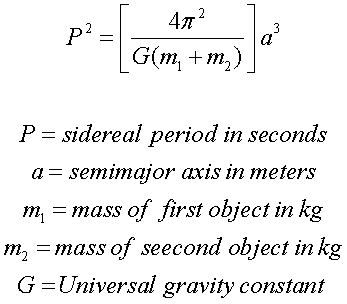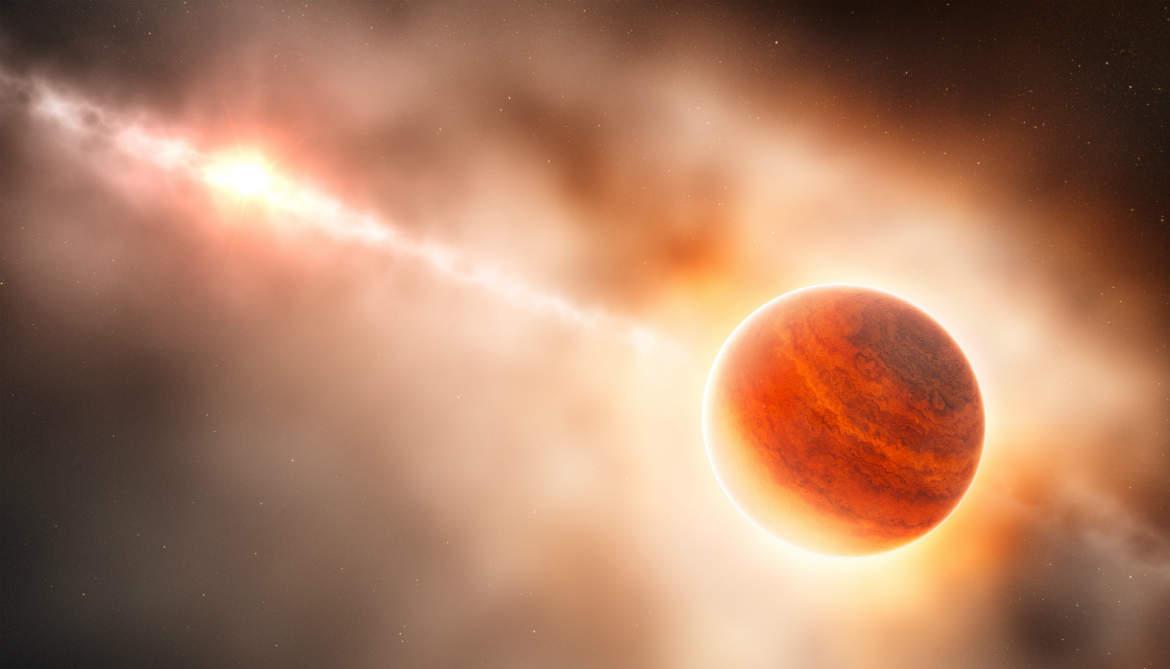- Planet Name: CoRoT-7 b
- Discovery Method: Transit




In 2016, Kepler discovered a new Earth sized planet orbiting the Proxima Centauri system named as Proxima Centauri b. It is just a cosmic hop away from our solar system, which is about 1.295 parsecs(4.2237251 lightyears). Its mass is at least 1.3 times that of Earth and that it goes around its Host star every 11 Earth days. Proxima Centauri b orbits in its star's habitable zone, meaning it's at just the right distance to receive enough starlight to keep water in its surface in liquid state. But this zone is extremely close to the star. So it's likely that the planet has become gravitationally locked. This means that the same side of Proxima Centauri b always faces its parent star, much like how the Moon always shows the same side to Earth.
The poor planet recieves occasional solar flares from its erupting parent star. On March 24 2017, two powerful solar flares erupted in two minutes span and blasting Proxima Centauri b with 4000 times more radiation than Earth receives in a average major flare. Flares like this would evaporate and tear down the atmosphere or ocean. It would sterlize the surface, leaving no habitable traces.



How "big" is a planet? There are two ways to come at the question, depending on how the word "big" is defined. If you think of the size of a planet in terms of mass, then there is a specific but rather technical answer. Planets are defined as bodies that do not generate their own energy from nuclear fusion. Any planet more than about 13 times the mass of Jupiter (about, 4000 Earth masses) generates enough heat and pressure in its core to trigger limited fusion reactions of deuterium, a heavy isotope of hydrogen. At that point, the object is considered a brown dwarf instead of a planet.
Analyzing about 3585 exoplanets, it is found that the planet HD 100546 b is the largest of all having radius 6 times the radius of Jupiter(about 419466km). As discussed above, this planet's size puts it near the border between a huge planet and a brown dwarf. Whilst being a huge planet it is also has >15Mj mass. The whole HD 100546 b is still very young protoplanet. The host star HD 100546 still has its protoplanetary disc bright and full of fumes. So, it is a new entry to the confirmed exoplanet family in 2013.
Kepler mission discovered a moon sized planet. Kepler-37b orbiting Kepler-37 system in Constellation Lyra. As of February 2013 it is the smallest planet discovered around a main-sequence star, with a radius slightly greater than that of our Moon. But Moon has way higher density than Kepler-37 b. The orbital period of this planet is very short as expected. It completes a total revolution in just 13 days. 7 times lesser than Mercury with 88 days orbital period.
You might think, a planet same size as moon would be have some resemblance, But no. Kepler-37 b is highly unhabitable due to its surface temperature scorching to 427°C. If we happen to be there death would occur within a minute. It has a radius of 1950km(about 213km bigger than Moon). Due to its radius and high surface temperature. It is not possible to have an atmosphere, suggesting that they don't support liquid water. There are 2 more planets orbiting the host star, having very high effective temperatures making them inhospitable worlds.
The exploration of space will go ahead, whether we join in it or not, and it is one of the great adventures of all time, and no nation which expects to be the leader of other nations can expect to stay behind in the race for space. John F. Kennedy